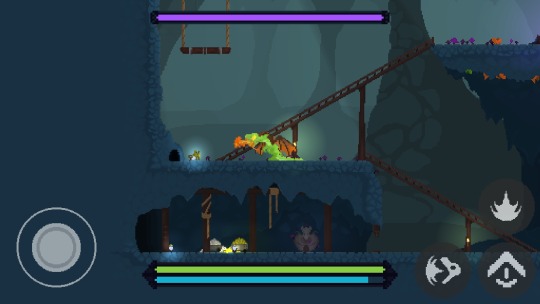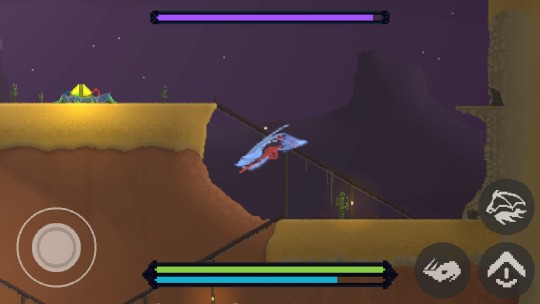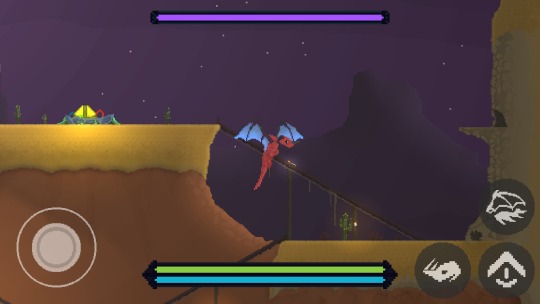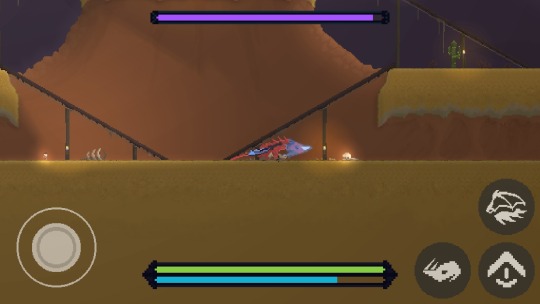Text
Are subscriptions the future of gaming?
Subscription gaming services were introduced to me through the use of the Humble Bundle platform, and although this is more of a subscribe to own type of condition, it made me wonder about existing gaming subscriptions.
Although Humble was the first the platform I had actually used, it wasn't the only platform I had heard about, being a previous Xbox user I also had noticed subscriptions such as the EA Access and of course the Xbox Game Pass, in which, at the time, I didn't give a second thought. I had simply settled for paying full price for the games I wanted to play.
Subscriptions were re-introduced to me through the release of the game The Outer Worlds. A game that in full price was worth NZ$75, but subscribe to the Xbox Game Pass for around two dollars and get full access to the game along with 300 other titles. Accordingly, an obvious choice was made.
Now I currently jump from subscription to subscription, playing all the games I want, and moving on to the next subscription when I want to play something new. Having no problem with paying up to $15 a month for access to these games. I'm already paying about the same amount for subscriptions to music and tv platforms anyway.
However, the fact that I feel the need to change to a different subscription every three months or so shows that there is currently no longevity in these subscription services. This is where, in my opinion, some subscription services are losing subscribers, and consequently revenue. This is because the majority of games on these services are single-player games. Generally speaking, this type of game can only be played once, and so when a subscriber has played all these games, there's very little point in still being subscribed.
To keep subscribers, you either need to keep adding more titles each month or invest in adding some multiplayer titles in which can act as a buffer. Multi-player games are commonly played over a longer time period, giving subscription platforms more time to add larger and better titles. Another option is to offer DLC's for said single-player games and include them in the subscription, therefore adding more value to the service.
With a lot of big companies jumping on board the subscription train, there's clear competition for getting subscribers. With some platforms claiming exclusivity rights, and some simply only publishing original games on their platform. These tactics of platform exclusivity claims are already causing some uproar in existing PC gaming communities such as the Steam, a prime example being the announcement of Metro Exodus in which on first release was only available on the Epic Store. Ultimately losing out on potential customers loyal to the Steam platform.
So to answer the question of this post, subscriptions could very well be the future of gaming, but currently, there is still a lot of work to do.
1 note
·
View note
Text
What? A Drag-on!
Been working on a lot more of this project considering the circumstances of the world right now. I haven’t posted about the development of what a drag-on for a minute. Looking back on previous posts I cringe a bit at some of the janky gameplay and lesser quality artwork, but then again I also see the product quality improvement as a positive reflection demonstrating the growth of my skills as a programmer and designer. The projects still got a way to go before it can be published but in the meantime heres some screenshots of the game as is now.








0 notes
Text
OOF! 6 Hour Game Challenge
The game OOF! was created from a personal challenge me and my friend and teammate Matthew Bland decided to do. This challenge is to create a functional game in 6 hours. We did this by using the 2018 Kiwijam theme ‘single use’ and designing and building a game from it. The theme single use could be taken in many different directions including environmental as in single use plastic bags, but we decided to relate it directly to game mechanics. We did a quick plan in 10 minutes and this brought open the idea of single-use bodies within a platformer puzzle game. Where you have a certain amount of bodies to complete the level and to do this you must kill the player repeatably, hence having single use bodies.
Progress Video
youtube
LEVELS
1

2

3

GAME TRAILER COMING SOON!
1 note
·
View note
Video
tumblr
New Map Progress

Map re-design foreground has been completed along with NPC pathing and more user communication. Next on the to-do list is the parallax, sound, and then some user testing of the games first level for insights on the games overall feel and level balance.
0 notes
Video
tumblr
Dragon Re-Design
Next task is to re-design the level to match the dragon as per my last post.
0 notes
Text
What! A Drag-on? Level Re-design
Current Level - Problems
The lack of space is causing player mobility problems, this is because of the placement of enemy pathing and flying space.
The high platforms on the top spawn ranged enemies and because of the placement on the level, it makes it hard for the player dragon character to easily traverse to that section to eliminate the enemy.
The size of the dragon is too large for space and while that could be fixed while a level re-size, the enemy pathing and landing areas still a have a placement problem, so a whole level re-design is necessary.

Follow the game on Instagram
0 notes
Text
Rapid Assimilation of Objects, Pain Perception, & the Body
“When a warrior picks up a sword for battle, do sword and soldier become one?”
Carlson, Alvarez, & Verstraten (2010) used an afterimage technique to study at what time, under what conditions a person holding or using an object, becomes one with the said object. In the study, they found that this connection between body and the object occurred within seconds, with not much or no training beforehand. This suggests that the brain alters a persons perception of their own body. Relating this back into the topic of gaming, because we the player are using a controller of sorts, this controller becomes apart of our body, potentially influencing our emotions as our connection with the controller becomes part of our body. I hypothesise this may happen with the player character in the game we are playing, causing us to feel pain and other emotions for that player character.
Mancini, Longo, Kammers, & Haggard (2011) investigated how pain is affected by viewing the physical body. When a person perceives their body for the first time, this influences the difference between how we sense the components of experiencing pain, specifically how intense the pain we feel is. Viewing the body itself effects how we feel pain, this means we can feel pain without being physically inflicted with pain. This is something that we see happing in video games when a player sees their player character fall off their skateboard or get bitten by a hideous monster, they can't help but wince and say “ouch” as if the pain was physically felt by their own body.
But how do these ideas associate with Virtual Reality games, where our body is actually our body, and the controls are actually our hands and head. Does this change the intensity of our emotions of pain and fear, in comparison to the emotions we feel for the player character in regular video games? Further research is needed to test this theory.
Carlson, T. A., Alvarez, G., Wu, D. A., & Vertraten, F. A. (2010). Rapid assimilation of external objects into the body schema. Psychological Science, 21(7), 1000-1005.
Mancini, F., Longo, M. R., Kammers, M. P., & Haggard, P. (2011). Visual distortion of body size modulates pain perception. Psychological science, 22(3), 325-330.
1 note
·
View note
Text
Serious Games
Serious games are described as being game that is created with the intention to educate or inform the player about the serious topic. Although I haven't played many serious games myself, I see its appeal for ideas such as training recruits or information children on fire safety techniques. I recently have seen in a Facebook post that there has been a Virtual Reality experience created to train police NYPD officers tactics on how to enter unsafe buildings and deal with active shooters, this experience simulated a real-world situation and forced these offers to resolve the case without harming any civilians or getting themselves injured. Although it could be argued that this is not a “game” per se, it still has the same mechanics and gameplay that are common and many other games.
youtube
Now, this is just an example of a serious game and a very serious one at that. But themes of serious games can be seen in many AAA titles, and in my opinion, a serious game doesn't have to be purposely created for the sole purpose of educating the player on a serious world issue, but it could be embedded in the game's story and gameplay. This can be seen in the free game ‘The Awesome Adventures of Captain Spirit’ which by title sounds like a game intended for children but is not. The player plays as a young boy who lives with his father whos struggling with the recent death of his wife and the boy's mother. In the game the boy creates a superhero alter ego and projects his imagination to reality. This already has themes of grief and escapism involved, but as you play through the game, you see that the father has traits of being abusive, and you see the concern for the boy from the neighbours and friends. This is another was the idea of a serious game can be used concerning everyday gaming experiences.
youtube
2 notes
·
View notes
Text
Environmental Storytelling
I’ve played my fair share of video games, and one, in particular, stands out when I think about environmental storytelling, and that game is Dishonoured. Not only is the game world visually appealing and the art style is different and exciting to look at, but the environment itself actually tells stories, and not just the game’s main story but the little seemingly insignificant stories of characters in the game world itself. This helps the player to understand the environment they are playing in and gives them ideas about what to do in gameplay scenarios based on the information provided visually in the game environment. Jongeneel (2013) discusses different methods of environmental storytelling and how they can be implemented in video games. After reading this article, I see many of these methods being used in Dishonoured, the first of which being “showing the player his or her (strategic) possibilities in the level.” The most obvious way in the game Dishonoured being lighting, in the game, the environments are lit in a way where you as the player know where you can or can't be seen by enemy NPCs. For example, if you hide in the shadows, it's near impossible to be seen by enemies unless they are very close and looking directly at the player character. Another way this method is used are levels, as in high and low terrain or game objects such as terraces and traversable lamp posts that are communicated to be a strategic point of view to the player. This gives the player an idea of a possible route to get to the next place without being seen, or these objects can be used as a high point to see to the whole environment and create a plan of attack. Another method I see being used in Dishonored is “Creating a detailed world that feels alive and breathing” as I mentioned earlier, the game world feels truly alive and reactive to the player. In fact, one of my favourite and most memorable storytelling mechanic in Dishonoured is done this way, the state of the whole game world reactively varies depending on what you do in each of the game's levels. If you decide to do a chaos playthrough where you kill a majority of the NPCs in a level the game world gradually develops into a weeper(zombie people things) and rat-filled city environment, with high guard security. Where if you go through the game with no kills or low chaos, there is none or not many weepers and rats, and little guard security. This projects the game's story and each individual players playthrough into the somewhat unique game world environment making the game as a whole feel more ‘put together’ and tailored to each players experience.
I would recommend this article to anyone thinking about using environmental storytelling in their game as there is an exemplary flowchart to follow that addresses precisely what method you should use for what you're trying to achieve.
Jongeneel, J. (2013). Environmental Storytelling in Games. Retrieved May 4, 2019, from http://www.jethrojongeneel.com/articles/T3.php
3 notes
·
View notes
Photo

Mini project I did while on break, exploring the use of procedural environment building in Unity Engine using a terrain engine and various free low poly assets. #unity #environment #3D https://www.instagram.com/claudiavanderhulst/p/Bw1fE7wBKEa/?igshid=1wr3batv2ealw
3 notes
·
View notes
Text
Coding For Artists and Designers _Final
Final 1 - Mini Game
For this final piece, I wanted to create a side scroller mini-game where the goal is to collect as many coins as you can within a time limit while dodging bombs. I have downloaded some free assets from itch.io and used them in the game. The player character has four different animations. These are idle, run(LEFT/RIGHT), jump(UP) and slide(DOWN) which can be triggered using the arrow keys on the keyboard. To collect coins the player must touch the coin, some of which are on the ground some in the sky, this can be done by jumping. To dodge bombs, the player must slide under them. Taking the ‘Wild Boar’ game as a reference, I implemented a forest mid-ground scene that slides along the screen at a set speed depending on which state the player character is in, for example, the run speed is slightly slower than the slide speed. I also added on-screen timers and stats(time left and points) so that the player can see their progress in real-time.
youtube
Final 2 - Waves Extended Edition
For this piece, I have extended on a previous version created for the shape and colour assignment. This work is made of many vector points in a grid that is then manipulated to look like waves. I took the song ‘Waves by Mr Probs’ as it is what inspired this extension of the work. The artist talks about “Wave after wave” which I took quite literally. Using some work from my other pieces I took the beat detector and put it in this sketch so that each time there was a new kick or hat is detected, the height and width of the wave would adjust making a new wave formation. I also used the snare trigger to change the blue tone of the wave respectively. This creates the effect of many different waves that change according to song flow and rhythm. It also has an interactive element where the user can switch view type using mouse height.
youtube
Final 3 - Fireflies
This piece is an extension on my lava lamp sketch. The original sketch was very plain and lacked any character, as I had made it just to see how particle systems worked. After looking at how these particles actually worked I seen that they were pretty similar to the of a swarm would fly. From this idea, I then went on to change the visuals of the particles and made them look like little glowing balls - fireflies. This looked nice, but I wanted to add something for the user to play and interact with, to add this I used the mouse position and adapted the code so that the swarm of fireflies followed the mouse pointer. I then added layers of background images and spawned a swarm between each layer. This makes the whole scene look more three-dimensional as the fireflies are between the layers of trees and are smaller and slower so they appear further away.
youtube
1 note
·
View note
Text
Coding For Artists and Designers _W5 _You
Prototype 1 - Lava Lamp
This piece is not really inspired by me per some more you, after the fireworks tutorial in class I wanted to play are with the same system, particles. I decided to make one that kind of imitated a lava lamp with green goo and all. In fact, now that I look at it the speed probably could have been a bit slower.
youtube
Prototype 2 - Optical Illusion
I’ve always found optical illusions interesting growing up, think it has something to do with my ever going interest in human perception. Anyway, what I wanted to do was create a circle based illusion you see shown commonly in films when characters are hypnotized. I couldn't figure out how to get the swirly effect but the never-ending circle is working.
youtube
Prototype 3 - Text Adventure
I’ve been getting more and more into text adventures lately which is probably because I had decided to take a paper on game narrative this semester. Anyway what I tried to do here was essentially create a basic prototype to just get the thing working, I had my friend Matt write a bit of story and implemented it into the game, might be something I want to continue with for final prototypes but I am not sure on what’s expected on the level of visuals.
youtube
1 note
·
View note
Text
How games move us: Emotion by Design
Isbister (2016) is an informative piece of work that can greatly help information developers on how to design games that make the player feel some kind of emotion towards the actions they have taken in-game. Isbister also explains some steps that need to be taken before the player can even begin to gather any sense of emotion. The step I found particularly import was what researcher Mihaly Csikszentmihalyi calls flow, from my understanding flow is a mindset creators can get in where the ‘art’ just kind of flows through them and on to the ‘page’. Relating this back to game players can get caught in a flow of a game and this is where they are most vulnerable, hence emotional responses are more easily received. Isbister has a whole list of things that trigger a player flow state but the one that stood out to me the most was a loss of self-consciousness. This interested me as I find myself in this state quite a bit while playing video games, for clarification, this is when you're so invested in what's happening in-game that you start to lose sense of time and what's happening in your surroundings. This is something that I believe automatically happens when you're placed in a Virtual Reality environment, and it does take too much design thinking to make virtual games that achieve this as opposed to screen-based video games. A game that made me that moved me emotionally is The Witcher 3, in fact after finishing the main story and watching the ending I got, my day was ruined and I become a zombie. If you’ve played The Witcher 3 you know exactly what ending I got and let me tell you I was not happy. In fact, I got up the next day with the intention of playing the whole game again just to get the at least one of the ‘good’ endings to make me feel a little less guilty about what my in-game action caused one the main protagonist Geralt to go through. I think this response was triggered based on the fact that I had caused this response to a character I had become very emotionally invested in, and then felt immense guilt. I think when you play as a character and see what their relationships with other people are like and how they are very likeable as a person it creates this kind of bond between player and player character, where the player kind of embodies the character for the time they play that game, Therefore causing you to adopt the player characters emotions as your own.
Isbister, K. (2016). How games move us: Emotion by design. Mit Press.
1 note
·
View note
Text
Research Topic Metamorphosis
Virtual Reality games and the transition of a players self-perception to a conditioned sense of self and subconsciously creating an in-game identity
Outcome Directions:
Implications for media enjoyment
The measurement of identification
Media effects
Designing for play
How to design to re-create this effect
Research Directions
Identity
Behavior Change(outside vs inside game)
Self-perception
Play(Roleplay)
Media Enjoyment & Effects
Early Childhood and Play
Emotion in Games
Creating ‘Flow’ in games (Mihaly Csikszentmihalyi)
0 notes
